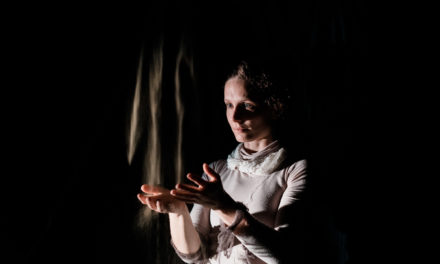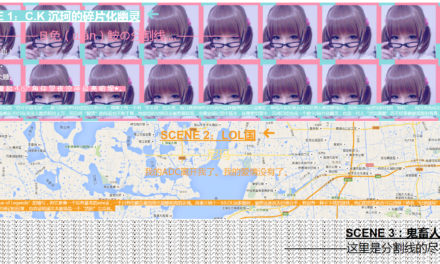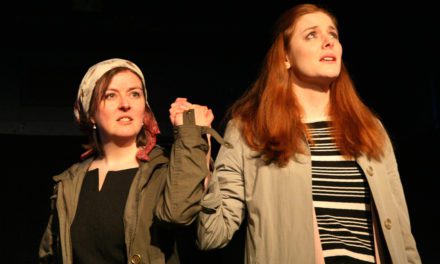The Norwegian theatre landscape is vast and heterogeneous; as different as the cultures and the geographies of this long-stretched country. It is impossible to produce a fair image of it all in one single article, and I will not make an attempt to do so. I will concentrate on the independent companies, or more specifically the part of the field of independent performing arts emphasising the progressive contemporary theatre we find among avant-garde artists. In other words; the artists who break the norms and the rules and innovatively investigate within their artistic field. These are the artists who open for new ways of thinking of and creating theatre, new ways to tell a narrative, new ways to win the audiences’ attention. From time to time this theatre has revolutionised the art of theatre, its expression and content. Sometimes the change has lasted only for a moment, other events have left deep and continuous traces in Norwegian theatre history.
The avant-garde theatre always has opposed the conformist theatre expressions – criticism and challenge of theatre conventions and institutions are part of the nature of the avant-garde. These artists have discussed the correlation between artistic experiment, technologic innovation and societal changes, and the relationship between artist, artwork and spectator. Art-internal criticism indirectly also includes an element of consensus formulation, due to the fact that artists can make clear what is central to the dominating theatre practice: What theatre is, what the social situation in the theatre is, which functions it has, which aesthetic and dramaturgic sets of rules dominate and which kinds of opinion-making rule. In the Norwegian context, the dominating tradition has been the psychological-realist bourgeois theatre, and Norwegian theatre avant-garde from an early time demonstrated its wish to distance itself from it in he choice of expression and context.
During the past 10 years, we have seen a diversity of theatre genres differing from the classical psychological-realism in Norwegian institutions. We have seen visually oriented, fragmented, collage-like and interdisciplinary performances reminding of the deconstruction of the avant-garde theatre in the 1980es and the 1990es. We encounter hybrid expressions inside as well as outside institutions today. Theatre expressions arising through exploration by smaller independent groups are in other words often adapted by the institutions. But it has to be underlined that still, it is first and foremost within the circles outside the large institutions, exploration is leading art into new cutting-edge expressions and statements.
A theatre project taking place outside of national or regional institutions will always, in economic terms, be an impoverished theatre. Unpredictable working conditions (economically, structurally and organizationally) always has characterised reality for artists choosing to work outside the institutions. This article will discuss parts of the national ecosystem theatre outside institutions has worked and still works in. In Norway, we use the terms independent companies and independent performing arts about this part of the theatrical landscape. These terms have existed in Norway since the 1960es. That was the time where we could first see the sprouts of this avant-garde theatre beginning to grow. During the 1960es the Norwegian theatre landscape mainly consisted of large institutions staging classical theatre for the bourgeois. The underground was marginal, but it existed.
The 1960s
In 1964 Italian Eugenio Barba established the company Odin Teatret in Oslo. He had arrived in Norway after several years’ work at Jerzy Grotowski’s theatre laboratory in Poland. Barba had visited Norway earlier, and Norway was where he wanted to be.
In the beginning of the 1960es, Norway was an impoverished culture nation. We were still hanging back in the fifties – one of the most conform and conventional decade the country has experienced. The cultural circles were characterised by parochialism, closed-mindedness and anxiety for the unknown. Due to war and post-war rationing Norway had been secluded from international currents. Most of what came from abroad was regarded with scepticism, including Norwegian theatre artists with international education and practice. The conditions were provincial and those who dared to attempt innovation were often opposed and ridiculed.
Into this cultural community came an Italian trained in the Polish physical, plastic and visually oriented theatre. The theatrical tradition broke with the conform institutions dominating our theatre landscape at the time. Barba was not well received, even though he only used Norwegian co-workers – actors not accepted by The National Academy of Theatre. Odin Teatret’s stay in Norway was short-lived. In 1965 the company opened its first production Ornitofilene, based on Jens Bjørneboe’s The Bird Lovers. After this, they got no governmental support to continue their work. However, the company had toured the Nordic countries with Ornitofilene. They had been well received everywhere, in particular in Denmark, and the city of Holstebro invited them to create a theatre laboratory there. Hence Odin Teatret moved to Holstebro in 1966, a town threatened by depopulation. Holstebro invited Odin Teatret as a city planning initiative, and it turned out to be a smart strategy. Odin Teatret still is located in Holstebro, where its presence has contributed to reviving the town. Norwegian theatre lost a rich resource when Odin Teatret emigrated.
Another avant-garde theatre, not to go unnoticed by, but rather living for almost two decades, was Scene 7 in Oslo. Scene 7 was started in 1966 as a subsection of Club 7. It was a small, open theatre with a breath of international air. The theatre manager Sossen Krohg phrased the experimental theatre’s profile as an open theatre; open to new theatre genres, new drama and new actors. The political radicalisation of the sixties was marching into Norway, even though the culturally conservative still dominated, and for those hungry for avant-garde theatre and international impulses, Scene 7/Club 7 was the place to go.
In the symbolic year of 1968 a new art centre opened, which along with Club 7 contributed to the capital’s countercultural art environment; The Henie Onstad Art Centre (HOK) in Høvikodden in Bærum (neighbouring municipality to Oslo). The scepticism of the new art centre was widespread among young artists, due to it being private persons, very rich private persons, who were sponsoring the party. But the young artists’ initial scepticism was soon shamed. HOK rapidly became a central venue for contemporary art and culture. The building was filled with the most advanced technology for its time and youth, rock, punk and other countercultural expressions were welcomed. In a time where modernism (now history in the rest of Europe) still represented something new and unknown to the general Norwegian public, more radical artists and the audience could experience experimental international visiting plays and workshops in HOK. The outside impulses included the radical shift towards the performative in the arts seen in Europe and the USA during the last half of the 1960es. Interdisciplinary aesthetic was established as a norm in avant-garde art. Norwegian arts were brought in contact with important international trends – in a time where outside impulses were still a rarity in Norway. Hence HOK gave new inspiration to and became an oasis for free experimentation for the avant-garde of the Norwegian art circles.
Despite the optimism among cultural radicals of Eastern Norway, the general Norwegian cultural community still was characterised by provincial narrow-mindedness and conservatism. For a long time, these attitudes were to prove they were deeply rooted in Norwegian mentality. Jan Erik Vold, one of Norway’s contemporary poets, explains it the following way: ”Høvikodden, along with Club 7, contributed to the countercultural golden age of the capital, a golden age bit for bit blown up when market liberalism, plutocracy, vulgar mentality, a tabloid public and social-democratic politicians devoid of vision set the tone for Oily Norway the last 15 years of the previous century […] During the 1960es, 70es and 80es, Høvikodden was the institution from the neighbouring municipality which, along with Club 7 in the capital, made Oslo a fully up-to-date city for international modernism and avant-garde. The lead the other Scandinavian capitals previously had held was now closed in on. After the municipality of Oslo struck Club 7 dead in 1985 Høvikodden for a long time stood alone in maintaining this tradition.”
The 1970s
Norway entered the 1970es backed by the political changes of the 1960es. The country experienced significant shifts in cultural policy during the early 1970es. Among other things, the nation started emphasising the periphery, and some decentralisation of performing arts began. This was a necessity, the politicians thought, considering that most of the field of performing arts was located in Oslo and partly Bergen. For now, it went: Performing arts for as many people as possible, from all layers of society. Decentralisation within cultural politics during this time emphasised strengthening the regional and the local culture on its own terms. Regional theatres were built, touring systems developed and outreaching theatre was a priority. The independent companies represented a large share of the theatre activity in the periphery the years to come. It was also mainly the independent groups who made sure that the children were allowed to experience theatre.
The cultural field in Norway still was small and narrow, with conventional institutions on one side and strong political movements (with the communist party AKP-ML at a pinnacle) on the other. The political movements created internal theatre-political opposites, tension built and in 1978 it ended in two fractions among the actors; the freelancers and those wishing to protect steady employment. At the time 155 freelance actors were registered in Norway, and it was almost impossible for them to find work.
By experimenting with and researching new theatrical expressions the independent groups wanted a break from traditional theatre expressions. It resulted first and foremost with a break with psychological realism and the fourth wall. It resulted in theatre marked by three main directions; political theatre inspired by revue/variety, agitation theatre inspired by Brecht and physical theatre inspired by Grotowski and Artaud among others.
This exploration of alternative theatre languages, as seen in the 1970es, played a large part in the examination of the social aspect of theatre. As mentioned above, the independent theatre companies were touring and reaching out to its audiences to a larger degree than the institutions. One of the main reasons was that the artists wanted to break down social and cultural barriers and to renew the stage-floor correlation. They wanted to blow their way out of the bourgeois venue and to examine the social aspect of theatre. They did by reaching out to new audience groups through alternative presentation policies, by producing theatre for new target groups and by emphasising societal criticism in the performances’ content.
In 1977 the approximately 16 independent theatre and dance companies existing at the time gathered. They had several wishes and needs in common; awareness and increased status of the field of independent performing arts, presentation of performances, collaboration across companies and fortifying of the economy. In February 1977 Teatersentrum was established (later it changed its name to Danse- og teatersentrum and got its official English name: The Norwegian Association of Performing Arts/NAPA) – an interest organisation for independent theatre and ballet companies in Norway. Including other things, Teatersentrum was to work for a governmental support system for the independent companies in particular. The organisational model was inspired by corresponding organisations in Sweden and Denmark. Among the companies behind Teatersentrum were Collage Dansekompani, Danseloftet, Dukketeaterverkstedet, Filiokus Teatret, Fri Ballett (Free Ballet), Grenland Friteater, Hovik Ballet, Musidra, Perleporten Teatergruppe, Saltkompagniet, Teater 4, Teater Rundt-Omkring, Thesbiteatret (The Thesbi Theatre) and Tramteatret. The same summer the companies arranged the first theatre festival for independent companies in Norway.
The 1980s
During the 1980es the number of independent performing artists increased significantly. This is connected to the fact that independent performing groups were accepted into the national budget in 1982, with support to management and production. In 1988 the system was changed into a three-part system divided between three-year and one-year management support, plus singular projects support. Another element was initiated in 1988; the quality of the artistic work of the companies was to be considered.
The postmodernist ideas of deconstruction had only reached a marginal theatre field in Norway. The ideals within deconstruction consisted of dissolving hierarchies; process hierarchies (a tendency in reality seen since the first groups’ democratisation of the work process) and opinion hierarchies (within theatre this led to breaking down the rule of the text) plus hierarchies come to effects. Hence the avant-garde theatre was led into postdramatic dramaturgy – a way to consider theatre being significant to parts of the field of independent performing arts in Norway until today.
Other dramaturgies
In Norway, the term likestilt dramaturgi, meaning equivalent dramaturgy, is used referring to postdramatic theatre, in which all means of expression are put on equal footing. Regularly the term is criticised for being utopian and near useless in the field of practice. This criticism is founded in a misunderstanding; the term does not mean that all means of expression has to be equivalent in practically every production, all productions will emphasise some elements more than others. Rather the term refers to an equivalent mindset based in an interdisciplinary approach (as described above). Under this approach it is not given that the text rules the theatre work and theatre expression, any element can be ruling. In other words, the equal status reflects a kind of democratisation of the theatre work – also reflected in laboratory-based working methods and organisational models.
Aesthetically the term equivalent refers to a dramaturgic structure in which the elements are connected under an equal-status mindset. It is no longer so that the visual, corporal, technological or audible elements are to cede for the dramatic text. Rather the theatre work and the textual work enter a synthesis in which development goes parallel. Postdramatic theatre has broken away from the dramatic narration and the epic drama, meaning that it rejects the linear story structure being the fundament of our classical theatre. In other words, this theatre challenges the text-based theatre tradition, not in terms of assassinating the theatre text, rather in terms of expanding the understanding of the text. Text collage may be the most precise term. This kind of theatre text is not solely based on dialogue, but mixes all kinds of texts: monologues, dialogues, poetry, theoretical arguments and text fragments from a diversity of fiction and non-fiction genres.
The avant-garde theatre of the 1980es often was strongly visually oriented (despite emphasising the inter-aesthetics); the pictorial effect as such being the central effect, which led to experimenting with the frontality of the space, or two-dimensionality. One wished to present the performance space as a two-dimensional image rather than a three-dimensional space. A consequence of treating the room as two-dimensional was that the dimension of time was expanded. The relatively limited movement in different space dimensions opened for an expanded movement in different time dimensions. Due to this emphasis on the visual in the work the term visual dramaturgy arouse towards the end of the 1980es.
New arenas
In Bergen, in the middle of the 1980es, there was a very fruitful artistic and academic cultural environment of large significance for the development and innovation within Norwegian contemporary theatre. Artists and academics contributed to pioneering in the establishment of Bergen International Theatre Festival in 1983; an annual festival programming Norwegian and international performing arts. In 1990 BIT became a full-year venue; BIT Teatergarasjen. Like Black Box Teater in Oslo and Avant Garden in Trondheim, BIT has for a number of years been responsible for co-producing and presenting high-quality visiting performances by Norwegian and international productions and companies. The foundation of the three venues led to more and better performing options for independent companies and project theatres.
Front guards
The company Baktruppen grew out of the cultural circles in Bergen during the mid-1980es. Some people claim it all began with Baktruppen. Baktruppen was established in Bergen in 1986. The name indicated the opposite of avant-garde, meaning the rear guard. The name was ironic – as an attempt to recycle the classic avant-garde in a post-modernist perspective. In other words, Baktruppen was among the first companies to introduce a post-modernist mindset in Norwegian theatre. The company worked following an equal-footing mindset, in process and aesthetics. Baktruppen developed performances through spontaneous games with the text material and used text in new and experimental manners. The company is known for working with irony and playing with recycling the avant-garde approaches to theatre and performance art. Baktruppen mixes acting styles and has among other things developed an acting consciousness regarding imperfection, dilettantism and no-point theatre. The self-inflicted ”amateurism” questions what is ”correct” theatre, commenting the assumptions and the practices seen in the theatre’s conventional craft tradition. Baktruppen’s theatre left the assumptions of what is popular and what is high-brow dead. In other words, Baktruppen’s work contained a discussion of the traditional craft theatre – criticism the group contributed to introducing to Norway, still seen in its work today.
Baktruppen took interest in Norway’s drama canon Henrik Ibsen from an early stage. But obviously they didn’t stage his dramas in the traditional way: In 1988 Baktruppen used Brand as a foundation for the production Everything in which Brand’s conflict was manifested in a 5,5-meter tall tower of steel. In 1990 the company performed When we dead awaken, based on Ibsen’s drama. In the latter, they attempted to stage it in a manner not requiring understanding of Norwegian. The text was structured in sequences, movement patterns and sound. The same year Baktruppen arranged a theatrical football match between Ibsen’s women and Strindberg’s men in Treptower Park in Berlin. Baktruppen’s early Ibsen work is now regarded as an introduction on how to interpret Ibsen anew.
Another front guard working at an international level, springing out from the Bergen circles from the 1980es is Verdensteatret (established by Lisbeth Bodd and Asle Nilsen in 1986). Bodd and Nilsen had experience from theatre science and visual arts respectively, and they still are artistic directors for the company. Verdensteatret defines as an artist collective rather than a theatre company and is among the best examples of interdisciplinary work within Norway’s theatre avant-garde. Verdensteatret got its breakthrough when beginning to purely cultivate an interdisciplinary expression in combination with a distinct work in using and developing new technology. This particular work broke through to the audience with the production Concert for Greenland in 2004, but we had seen the initiation of it already in 2000 and 2001 in the productions Régla and TSALAL. Mixing the interdisciplinary and new technology has been a trademark of the work ever since, and today Verdensteatret is at the pinnacle of this expression internationally.
Translated by Lillian Bikset
This article was originally published on Scena.ro. Reposted with permission. Read the original article.
This post was written by the author in their personal capacity.The opinions expressed in this article are the author’s own and do not reflect the view of The Theatre Times, their staff or collaborators.
This post was written by Elisabeth Leinslie.
The views expressed here belong to the author and do not necessarily reflect our views and opinions.


















